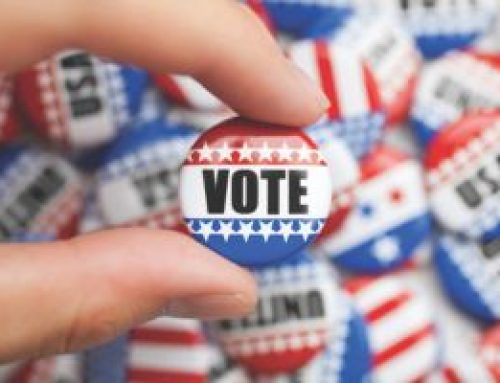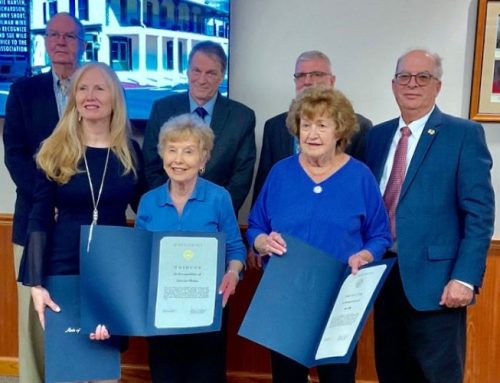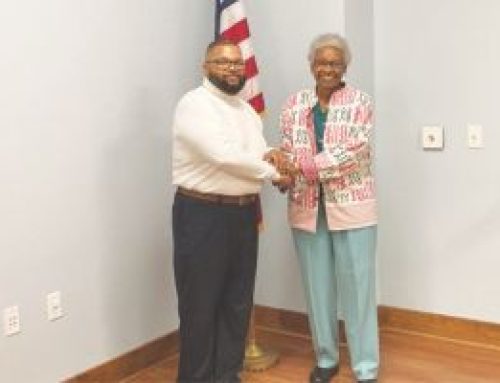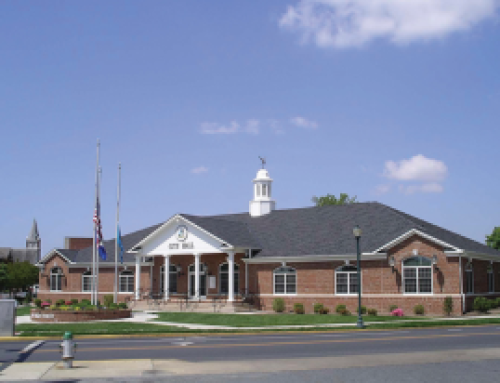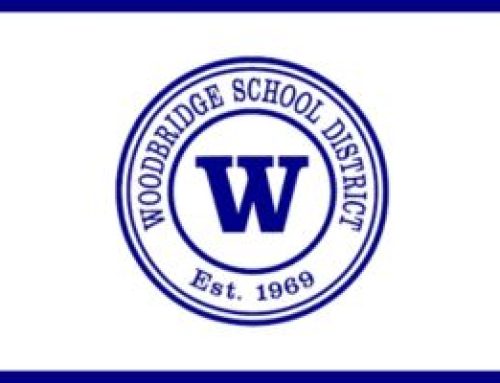Seaford mayor David Genshaw is facing challenger Councilman James King in next month’s election. Following is brief biographical information about the men, and their answers to some questions posed to them by the Seaford Star.

Genshaw
David Genshaw moved with his family to Seaford when he was 12, and graduated from Seaford High School in 1983. He is also a graduate of the University of Delaware, class of 1988.
Genshaw is a business development account manager for UPS. He and his wife, Rebecca, have four children and two grandchildren.
Genshaw was elected to the city council in 2012 and appointed acting mayor the next year, when Mayor Bill Bennett resigned. He is seeking his fourth term in office.
Q – Do you feel that the city of Seaford made the right decision in transforming the 911 dispatch center into a call center?
Yes, transforming the 911 center was the right decision. The cost of investment needed in people and technology was outpacing our ability to pay without sacrificing other services or increasing taxes. This did not seem appropriate since our community is already paying taxes for this service that is provided by the county and state at the EOC.
The 911 service has improved since the transfer. Calls are answered faster.
Q – How do you define growth of a city? Is it only a matter of new businesses and jobs? And what amount of growth is necessary for a city to remain vital?
Growth means that we are not in the same place as five years ago. It is not just numbers but improved business climate that businesses, homeowners, and developers see Seaford as a good investment for them and their families. It is not just jobs, although I believe this is key, but it also entertainment, medical conveniences, and outdoor activities.
To remain vital, we should see new business coming in and re-investment of existing businesses.
Q – How do you feel Seaford’s city government is functioning? Is it sufficiently open to the public? Is it efficient? What changes, if any, would you like to see?
Seaford’s city government has always been held in high regard among developers and internal government agencies as being very responsive. I believe today we function as an organization with more synergy with all our focus on improving the business climate in Seaford.
The public has full access. The public will see this improve with our new website, live streaming meetings, and our continued efforts to push out information on all possible media channels.
Q – What do you feel the responsibilities of mayor are? What do you see as the role of city government?
The responsibility of a mayor is to lead. The mayor sets the tone and how we interact with our internal and external customers. The mayor is the bridge of communication between the city, the local elected county, state and federal representatives. It is critical that the mayor have a good working relationship and respect of all of these individuals who impact Seaford.
City government’s role is to provide the services to the taxpayers which they request and pay for. Some of these critical services are our police and fire, our utility services and our parks and walking trails. This community is blessed to have a city workforce that loves Seaford and is committed to do their very best every day.
Q – How do you feel the planned Oyster House Park could transform the city? What is your vision downtown?
The Oyster House Park could be the linchpin on which all other retail and restaurant growth begins. The foot traffic to downtown will increase along with activity such as kayaking and canoeing, class room settings, and history buffs that will open the Nanticoke to more people than ever before.
My vision of downtown is what we see at a Live for Chocolate event: People walking and enjoying our restaurants, shopping in our unique retailers, and enjoying what defines Seaford – the Nanticoke River.
Q – Do you feel that the city is on good economic footing? Is its spending what it should be and is its savings accounts what they should be?
I believe Seaford has and will continue to watch its finances and be conservative with the people’s money. Seaford does a great job and leverage investments from the Federal, State, and County government to partner in our infrastructure improvements to attract additional business.
Our spending and savings are reviewed throughout the year and each spring we work on our budget for the following year. As the environment changes, we too need to be flexible and adjust to the economic conditions which the City strives to do.
Q – What do you feel is going right in the city? In what areas would you like to see change?
What is going right is that all of us – elected representatives and city employees – know our No. 1 focus is economic development. Everything we do and every department impacts how businesses and potential homeowners view our city. We all are pulling in this same direction and any success we have is due to all of these good people working together.
It has been my goal to leave my elected position and this city in a better place than when I arrived so that the next mayor, council member, or employee will have a jump start in making Seaford the Perfect Place to Start.
_________________________________________________________________________________________________________________

King
Seaford native James King graduated from Seaford High School in 1987. Last year, he retired from Food Lion after a 26-year career with the grocery store chain, 23 of them as general manager. In 2005, he was named divisional store manager of the year and in 2018, he was district manager of the year. Now, he oversees a small internet business that he and his wife, Kristi, own and handles the day-to-day operations of five income properties.
He serves on governing boards for the Salvation Army and the Nanticoke Senior Center, and is affiliated with several different food programs throughout the community. He was elected to a three-year term on the city council in 2018.
The Kings have two adult children.
Q – Do you feel that the city of Seaford made the right decision in transforming the 911 dispatch center into a call center?
The decision to close the call center was not one in which I am in agreement with the current city administration. The decision did not feel fully vetted, and it was against the interests and concerns of our constituents. The city did not fully explore other streams of revenue, and did not explore the possibility of the creation of new streams of revenue. We did not fully study every line item on the city budget, seeing if other things could have been done to keep our call center operational. Our constituents spoke loudly and clearly as to their desire for the call center to remain open, and their concerns were not properly taken into account as a factor in this decision. At the end of the day it came down to Mayor Genshaw putting profits first over personal safety.
The $650,000 cost quoted by Mayor Genshaw is an exaggerated number as well as the 30-percent tax increase that he said would be needed to support the dispatch center. The shortfall was closer to $150,000, a number which could have been easily covered by the three-percent lodging tax revenue stream. No additional tax burden would have been shouldered by city residents, and they would have gotten what they asked for, an operational 911 call center in Seaford.
There are other things to consider here too. The current agreement with the golf course needs evaluation. The golf course receives more than $400,000 in tax dollars per year. Profits the golf course generates, up to $500,000 a year, are kept by the managing company overseeing the golf course before the city gets any return on investment. That is untenable. The golf course is a much-needed part of our community, adding a tremendous amount of value to the city. It provides a wonderful source of outdoor recreation, bringing much-needed revenue dollars to our community. Having said that, our citizens both need and deserve a larger and more equitable return on their hard-earned investment.
Q – How do you define growth of a city? Is it only a matter of new businesses and jobs? And what amount of growth is necessary for a city to remain vital?
There are several things that factor into the growth of a city. It’s more than natural growth – new people moving in and replacing those that have moved out. There needs to be a balance. You do not want so much growth that you lose the small-town charm and appeal of our city. We need to continue to build on our history while offering modern amenities. We need to utilize and market our natural resources to their full potential. As an elected official, I have an obligation and responsibility to create an environment in which job creation can occur. We must make significant investments to our infrastructure, making it more attractive for businesses to come to our city.
Seaford is the last navigable deep-water port on the Nanticoke River. The river was center to the founding of this community, and the city has not done enough to herald this and make the city attractive for tourism and other assets that both market to and facilitate the use of the Nanticoke River. One only has to look at other deep-water communities across the Eastern Shore as well as other areas, and see how city officials have successfully positioned themselves as attractive tourism destinations.
Q – How do you feel Seaford’s city government is functioning? Is it sufficiently open to the public? Is it efficient? What changes, if any, would you like to see?
I do not feel our current structure encourages or supports public involvement. In many respects it discourages it. Most of the city planning meetings that are “open to the public” are conducted during the work week in timeframes that make it difficult, if not impossible, for public involvement.
We need to do a much better job with community and citizen involvement. We need to commit to making governance more efficient and transparent. Citizens and governance should be partners in progress, creating unity and support, with everyone having a clear understanding of our goals and visions for the future of Seaford. This only happens if city administration becomes more transparent in their decision-making as well as encouraging honest and open dialogue with citizens.
Q – What do you feel the responsibilities of a mayor are? What do you see as the role of a city government?
The mayor is a public servant who must keep the needs of the people he is serving in mind at all times. This job comes with a lot of different responsibilities, one of which is spearheading positive economic growth and the overall economic performance of the city. An effective mayor is an overseer of the health and wellbeing of the city they serve. They work to create and lead an inclusive environment where people feel like they are a part of the process. A mayor is a leader who creates unity by making decisions with community involvement and input. A mayor is a leader who values and understands the importance of diversity and works hard to encourage it at all levels. A mayor understands that following up and communicating effectively with the community is how positive and effective change for a city can occur and take solid root.
Q – How do you feel the planned Oyster House Park could transform the city? What is your vision for downtown?
I feel that the Oyster House is a very important part of revitalizing our downtown. I feel that there are some major issues that need to be addressed now in order to make this project the success it can be:
* Public safety – You can spend all the money in the world on a project but if people do not feel safe, they are not coming or returning. We should return foot patrols to the city. Citizens feel safe when they can see, talk and interact with officers going about their duties.
* Create a walkable environment. We must create an area where people can get to destinations without endangering their lives. We must improve our crosswalks, making them more visible. We need to take a hard look at the traffic lights in our downtown district and decide if they are still viable and necessary. Is the timing of the lights correct? We must look at speed limits and the fact that we have a truck route that runs through the heart of our downtown district, a district chock full of Seaford history.
* I do not feel that the city has matched sustainable growth with adequate parking. I would like to see additional parking created with perhaps a few charging stations for hybrid and plug-in vehicles.
* Cleaning up abandoned and blighted properties. This is not the perception we want for our city. A timeline is critical to any project. If the buildings are not salvageable, then the property owner is responsible for demolishing – cleaning up, beautifying and maintaining the property until ready to build.
* The city currently has a 9 p.m. noise ordinance in downtown. This needs to be addressed with downtown residents and residences. Potential business growth in this could include positive outdoor entertainment. A plan of action should reflect growth potential without sacrificing quality of life issues for downtown residents.
Q – Do you feel that the city is on good economic footing? Is its spending what it should be, and is its savings accounts what they should be?
I am very concerned with the current and economic future of our city. Our reality is that Seaford struggles to balance its budget. City leaders continue to write budgets with large deficits year after year. The cost of doing business continues to rise, and as a consequence we are starting to become non-competitive when compared to our neighboring states. The city must create additional income streams to offset the increased cost of doing business. If the city fails to achieve the necessary growth to offset the increase in costs, the city will be forced to raise rates of services, or continue down the path the mayor has placed us on, of eliminating services. This can be seen by the decision to eliminate our 911 call center. The bottom line is that Seaford citizens are paying more and getting less. That is not fair to the hard-working residents of Seaford.
We must grow additional, effective income streams. The city should be exploring growing additional income streams through the three-percent lodging tax, renting out water towers to cell phone companies, managing the golf course through our own parks and recreation department, starting our own trash services, processing other towns’ waste and growing our customer base through the expansion of commercial, residential and industrial growth.
Q – What do you feel is going right in the city? In what areas would you like to see change?
* The state’s downtown development district program is a true success in Seaford, bringing significant private investment into our downtown district. Investors who make qualified improvements to properties within this district could receive a rebate up to 20 percent of eligible costs upon completion of their project. I would like to see this program expanded to other parts of our city.
* The latest statistical analysis crime report bears out the fact that crime is on the rise in our city. Crime rates cannot drop with a reduced police presence. We need to take a stronger and more consistent approach to crime prevention. Our police department does great work! We need to ensure that they have the resources to continue to do so. We need to create an internal task force so they can focus their attention on drugs and drug related crimes. It’s time to draw a line in the sand and move this element out of our community.
Economic growth and public safety are irretrievably linked. You cannot promote effective business growth without the city having an equal focus on public safety.
* Electricity Rates – I feel that the city of Seaford cost per kWh is high when compared to other energy providers throughout the state. (Residential Cost @ 750 kWhs as of April 1, 2020, the city of Seaford rates are 12-percent higher than those of the Delaware Electric Cooperative.)
The city is very dependent on the revenue dollars generated by this department to run the city. Millions of dollars a year are transferred out and reallocated to other departments. The city needs many of those reallocated additional dollars of profit to operate our city.
We need to continue to grow our customer base by creating new commercial and residential customers. This will create a greater demand for electricity while growing our tax base and creating much needed employment opportunities. With this growth, we could offset and lower the cost of electricity, thereby returning the savings to the residents of Seaford.
We must continue to create alternate resources to reduce energy cost and pass the saving to our customers (solar, wind, perhaps even waterpower generation).
Competition is a crucial factor in driving economic growth. We must continue to lower the cost of doing business in our city while maintaining extremely high customer service standards.
* We must continue to make infrastructure investments. In order to attract new development, we must be prepared for it. We need “shovel ready” locations, primed and ready for economic development, including water, sewer, electric and DelDOT approvals. Groundwork the city addresses ahead of time reduces the time it takes a company to begin construction of a new facility.
* Cleaning up the abandoned and run-down properties throughout our city. This is not the perception we want for our city. We need to encourage and create stronger partnerships with existing property owners. We need to consider transforming abandoned properties and run-down shopping centers into financially viable futures that don’t rely 100 percent on retail sales. These things have been successfully done in other population centers in the region, where destination centers, or villages, are created that boast popular micro-apartments on an upper floor and a mix of retail and non-retail tenants on the ground floor.
The city also needs to review current ordinances pertaining to abandoned and run-down properties. We need to be willing to look at how other population centers have addressed these issues with ordinances and other tools, and see if there is application for our city.
Editor’s note: See next week’s Seaford Star for the story on the Seaford Council race.

